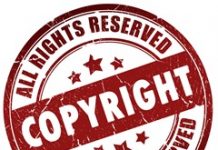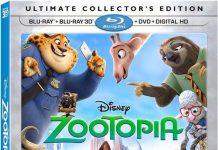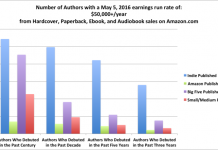
For many years my reading habits ran in cycles. For x period of time, I read only fantasy and science fiction. When that cycle came to an end, it was replaced with mysteries. As that cycle ended, I moved to nonfiction biography. And the pattern kept going — I would come to the book-buying and -reading trough and gorge on books that fell within a particular genre, satiate my appetite for that genre, and then move on to feast on another genre. For 50+ years, that has been my habit. Until 3.5 years ago…
…when I received my first ereader device, a Sony PRS 505, as a holiday gift. Suddenly my reading world was threatened with upheaval. At the time, I had been in my third year or so of reading largely nonfiction and the occasional novel. All of my book purchases were hardcover and I was spending upwards of $5,000 a year on hardcovers (I am not going to discuss my magazine reading as those habits haven’t yet been affected by the ebook revolution).
When I got my Sony I learned pretty quickly that I had limited options as to where I could buy ebooks. At the time, Sony used its own proprietary format; it hadn’t yet transitioned to the significantly more open ePub format, although that came about 8 months later. I also discovered, after purchasing my first nonfiction ebook for the Sony that nonfiction on the Reader was not going to be a practical option for me. Much of the nonfiction I read is heavily noted and accessing notes was awkward at best, impossible at worst.
I also purchased a couple of novels that I had wanted to read but which were no longer available in print, yet they were available as “reasonably” priced ebooks. And thus began a change in my reading habits, compliments of the ebook revolution. I found that reading fiction on the Sony was extraordinarily pleasurable. The screen was excellent; the ease of bookmarking was great; the ability to switch among books wonderful; and the ease with which I could carry multiple books everywhere with me was breathtaking. The Sony was meant for me and for any avid reader — as long as it was fiction.
That was the kicker — it had to be fiction. The Reader could handle nonfiction, but not all that well (and from what I could see of friends’ Kindles, the Kindle was in the same boat). So what to do?
In a way, solving my problem was easy. I have always viewed fiction and nonfiction differently. I consider 98% of all fiction as read-once-throwaway material; little of it was worth saving for any reason. I also consider fiction to be a “cheap” read. What I mean is that with only a few exceptions, the most I am willing to pay for fiction is the price of the mass market paperback discounted. In contrast, I consider 100% of the nonfiction I buy to be books I want to keep in my permanent library for future reference by me or someone else (note that I said that I buy; there is a lot of nonfiction that belongs in the fiction category of read-once-then-throwaway). I consider these books to be readable multiple times (although I do not do that with a great deal of frequency) and some of them to be collectible. Consequently, I will buy the hardcover and pay the price.
The ebook revolution affected my reading habits by “making” me buy and read fiction in addition to the nonfiction I buy and read. My habits have changed; my reading broadened. The ebook revolution also introduced me to a category of books that I would not have considered at all before the advent of ebooks — the self-published book. I still have not ventured into self-published nonfiction because I still give credence to traditional publishing and its vetting process, although that credence has been under attack in recent months as a result of traditional publisher carelessness that has been publicized.
Previous to the ebook revolution that began for me with the gift of the Sony, I would never have knowingly bought a self-published/vanity press book. No exception. But within weeks of receiving the Sony, I discovered Smashwords and free and 99¢ ebooks. I grant that there is a lot of poorly written, poorly edited, and poorly produced drivel at Smashwords, but I was willing to do my own vetting for that price. I also discovered Fictionwise, which had some very inexpensive fantasy books, especially with the sales.
I purchased a lot of ebooks from Smashwords and Fictionwise and soon found that I was devoting much of my reading time to fiction. I’d pickup a hardcover nonfiction book only to put it back down after a few minutes because I really wanted to read on my Sony. I was hooked. (I’m waiting for the American Psychological Association to create a new mental disease category for my ereader addiction.) I will admit that given my druthers, I’d druther read on my Sony (which is now the newer Sony 950) than read a print book.
It is a constant, daily struggle for me, and I am losing the battle with myself. As each day passes, I become ever so slightly more addicted to reading on my Sony 950 and less willing to pick up the pbook. This is causing me angst on another front: the financial front.
Because of how poorly many ebooks are produced, their high pricing, and the restrictions imposed by DRM, not least of which is the idea that I am “renting” the ebook rather than owning it, I am reluctant to abandon hardcover for my nonfiction. I think making that transition is at least 5 years, maybe 10 years, away for me. As well as my Sony 950 handles footnotes and endnotes, there are still things that dedicated ereaders do not handle well that are important to nonfiction, such as images. This conflicts me because the reading experience of the Sony 950 is so great.
As this internal battle rages, I find that in some cases I buy both the hardcover and the ebook versions of a particular nonfiction book. Granted this doesn’t happen often, but even I can see it happening with increasing frequency. Whereas when I was using the Sony 505, which I did for 3 years, I only purchased 3 titles in both formats, an average of 1 per year, since buying my Sony 950 at its release 8 months ago, I have purchased 2 books in both formats and have contemplated purchasing several more (but have not yet given in).
The one battle that the ereader has won, and it wasn’t much of a battle, is in regards to fiction: I will only buy fiction in ebook form, with the exception of a couple of authors whose books I am collecting, in which event I will buy both formats.
The other battles that the ereader has won are that of broadening my reading habits and skewing the number of fiction versus nonfiction books I buy. As for the former, I now read concurrently fiction and nonfiction rather than cycling and I read multiple genres of fiction rather than cycling. As for the latter, whereas I used to buy 20 nonfiction for every 1 fiction pbook, I now buy many more than 20 fiction for every 1 nonfiction I buy, although I read only 3 fiction for every 1 nonfiction (I have large to-be-read piles of both to get through). However, I rarely spend more than 99¢ on the fiction books.
My reading and buying habits have been significantly influenced by the ebook revolution. Has it affected your habits, too?


































Fascinating rundown. My history is similar.
I started with an ebookwise 1150. I read mainly public domain stuff and it hit me how much public domain stuff is really out there. I loved that device, and I mourned its loss when I accidentally dropped it while in Boston (ironically, to give a lecture at Emerson about ebooks).
I used a Sony 505 and cybook as well. Loved it, though I had performance issues with Sony. Continued public domain stuff and still bought mostly print books (mainly on half and library book sales). Wasn’t in the least bit tempted to buy any ebooks though I downloaded a lot of creative commons stuff. I was extremely disappointed with the quality of epubs and the hardware constraints. Nobody was really trying to make great-looking ebooks for easy reading across platforms.
Ipad radically changed my reading habits. I no longer worried about format compatibility or DRM as much. I bought several nonfiction titles, some on Amazon, some as PDFs which I read on good reader. Previously I felt reading PDFs was counterproductive. Now I no longer avoid PDFs because I know I can read them easily on ipad. I keep all the city’s bus schedules as PDFs in Good reader, as well as Paris Review interviews and climate change documents. Also, exhilarated to browse through feedbooks, PG and other places using Stanza. finding public domain has never been easier. I really don’t have problems paying for fiction content, but most of the fiction which interests me is still available for cheaper as a print book. I expect this to change quickly.
Except for special interest nonfiction (in which I’d be willing to pay a little more), I really can’t see myself paying more than $3 for a creative title. But I see myself buying a lot more of it.
Let me just say: I have nothing against Lulu/smashwords titles, but neither site really let you browse easily. I’d be more likely to buy things from those sites if they were mentioned on a blog or mailing list. But i think smashwords is great.
Up until recently I used to say that 90% of my reading was still done with print books. With my ipad, I think the ratio has gone to 50% (especially since I take a lot of mass transit). As much reading as I do on the ipad, the glare makes it hard to read in a lot of circumstances…and frankly I don’t like reading the ipad late at night — my eyes need a rest. for this reason I will be buying a Nook touch tomorrow!
“The other battles that the ereader has won are that of broadening my reading habits and skewing the number of fiction versus nonfiction books I buy. As for the former, I now read concurrently fiction and nonfiction rather than cycling and I read multiple genres of fiction rather than cycling. As for the latter, whereas I used to buy 20 nonfiction for every 1 fiction pbook, I now buy many more than 20 fiction for every 1 nonfiction I buy, although I read only 3 fiction for every 1 nonfiction (I have large to-be-read piles of both to get through). However, I rarely spend more than 99¢ on the fiction books.”
Loved this last paragraph, pure proof that quality is not found at .99 cents. Do the math” you spent almost $20 to find three books to read (although did you finish them….) when you could have bought two high quality books and enjoyed them more.
@Santiago — Just FYI, out of 100 ebooks I “purchased” the price paid for at least 90 of them was “free.” Most of the ones I did pay for were at the 99 cent price although I do pay up to $2.99 for the ebooks. However, I don’t pay any price greater than “free” unless the ebook has come highly recommended by someone whose opinion I trust or the books are subsequent volumes in a series where I read the first volume for free and found I wanted to read more.
Contrary to what you write, there is a lot of quality at the 99 cents and free price points. Here are three that I read that caused me to buy the rest of the author’s ebook offerings: A Sentence of Marriage by Shayne Parkinson; In Her Name: Empire by Michael Hicks, and Thin Blood by Vicki Tyley (I just checked and Thin Blood is no longer available for 99 cents of less). All are available via Smashwords.
I’d love to see a thread devoted to recommended books at the 99 cent range. I’m sure there are gems there, but it’s hard to hear about them. (thanks for the recommendations, btw).
Robert, checkout DailyCheapReads and Books on the Knob for inexpensive fiction. Most book blogs also do reviews and are a good source, like Red Adepts.
I’ve had my Kindle for over 18 months and have only read one physical book in that time, I much prefer my Kindle. I really need to make myself read my unread physical books though, one was a gift.
As for inexpensive indie fiction, I’m an addict. I have over 2000 books for my Kindle, mostly free or less than $5. Some of that is non-fiction.
I’ve expanded my reading tastes into far more genres than I ever read before. I read mostly sci-fi/fantasy when I was young, then historical romance, switching off between the two. Now I also read mysteries and geopolitical thrillers or books that can’t be pigeon-holed into one genre.
With so many books, part of the fun is randomly choosing the next book to read. I rarely remember what they’re about, although I do have around half of them in collections based on genre. I make myself switch genre every book.
I’ve also tried some paranormal books because I like supporting certain indie authors and their work, even though it’s not my favorite. I think the writing is great, I’m just too much of a skeptic to get into it.
All in all, eReaders and ebooks are the greatest invention. I could have never imagined carrying my own library with me everywhere I go.
I am absolutely certain that the ereader revolution will change everyone’s reading habits over time. For me, I still enjoy the feel of a real book in my hands but my kindle is a brilliant backup. There are also circumstances where it’s impractical to take your books with you where the kindle is invaluable. Glad I’m not in the retail trade though!
Clarity
I’ve used ereaders for over ten years due to a loss of concentration as a result of an operation and the inefficiency of the old heart lung machine. Most of my type were called “pumpheads” by the medical profession. I found that then Palm Pilot only displayed a small amount of text and allowed me to page through a large book one little page at a time. I read everything now on my iPad, nook, nook color and still my old Palm TX. Except for used books…. Books that I collect on my favorite topics Thoreau, whaling, nautical history, and genealogy. I haunt used bookstores and often buy books at a fraction of their original cost for family and friends. Paper has become my vehicle for the past, except for the many books I find at archive.org and similar sites.
Only indirectly.
international currency movements and competition amongst online retail has done more, as has the growth/expansion of audiobooks.
In the past year I’ve probably bought more books than I have in a while. though thats non fiction. with fiction I continue to go more and more down the audiobook route as more titles are available unabridged.